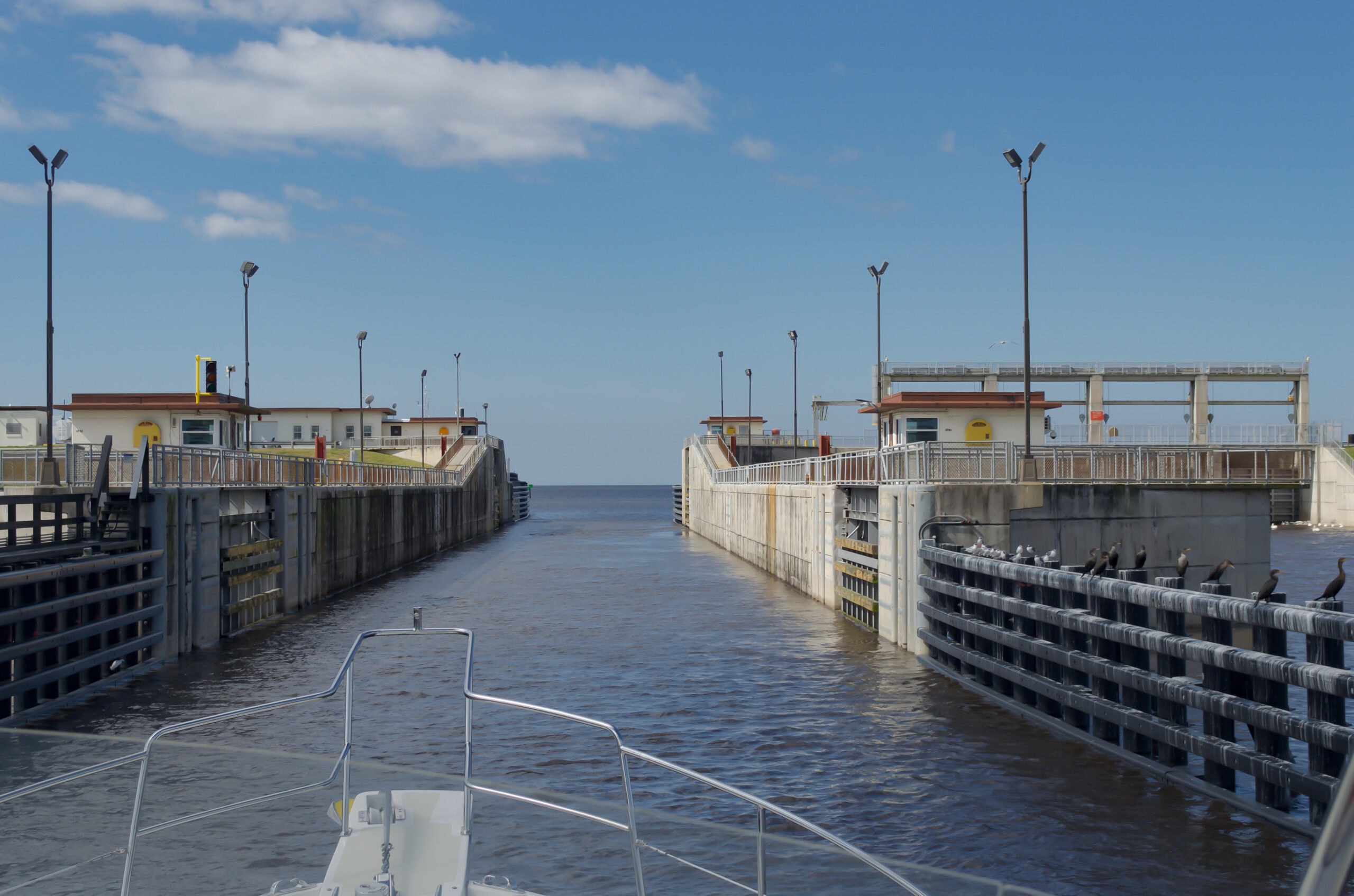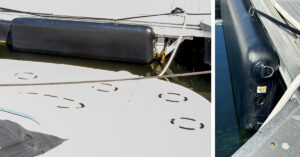Traveling through a lock is one of the more unique experiences of boating and not one every boat owner has a chance to experience. Because of this, if you find yourself having to pass through a canal lock for the first time, it can seem a bit overwhelming. The truth is, there is nothing to fear. Several thousand boats pass through canal locks safely each year, and with a bit of background knowledge, you can be prepared to do the same.
Canal locks were built many years ago to allow canals the ability to cross any hills that separated the river basins. This was mainly for the purpose of transporting goods. Over the years, several other solutions have been tested, such as canal lifts, but none have proven to be more effective than the tried and true locks.
Locks can be operated in one of three ways. Some locks are operated by an on-site lock-keeper, some can be operated by boat owners themselves, and others are operated automatically, where a simple push of a button by a deckhand onshore starts a pre-set locking procedure. Regardless of how the process is initiated, it follows the same step-by-step procedure:
- The bottom sluices (or gates) are opened to allow the lock to drain.
- The lower gates are then opened.
- With the gates opened, the boat is able to enter the lock.
- The lower gates and bottom sluice are closed.
- The top sluices are then opened so that the water level rises in the lock, floating the boat up to the next level.
- The top sluices, or gates, can now be opened.
- The boat is then able to exit the lock on the new water level.
When approaching a canal lock, it is important to prepare your vessel to pass through safely. If the lock has an on-site lock operator, it is best to alert them ahead of time so that they can prepare for your arrival. Before arriving at the lock, it is essential to get all of your safety equipment ready. Some key items to have that will help in passing through a lock are:
- Work gloves for handling the lines
- A pole or boat hook to aid in pushing off the sides of the lock
- Boat fenders large enough and numerous enough to protect your boat from concrete lock walls
It is wise to deploy your fenders through canal locks, especially if they are wider locks. In locks that are very narrow, boat owners need to be careful that there is enough space so the fenders do not get stuck, or worse, ripped off when exiting the lock. Make sure to deploy your fenders well before passing through the lock. It is a good idea to use larger fenders in this situation, as smaller ones could move around and get caught too easily, and not provide proper protection.
The truth is, there are mixed reviews when it comes to deploying your fenders through canal locks. Many boat owners find it unnecessary, and more of a nuisance or hazard than anything else. This often happens when smaller fenders are being used in this situation, and are not substantial enough for the job. While fenders can be extremely helpful in many situations, proper use is the key to success when it comes to deploying your fenders through canal locks.
Making the decision to deploy your fenders through canal locks or not is ultimately the decision of the boat owner. If the right size fenders are used at the appropriate time, they could be extremely helpful in this situation. The key to passing through a lock successfully is being prepared. With the right tools and knowledge, even first-time boaters can pass through locks of any size with ease. Check out our collection of AERE-FENDA SOX fenders here.









